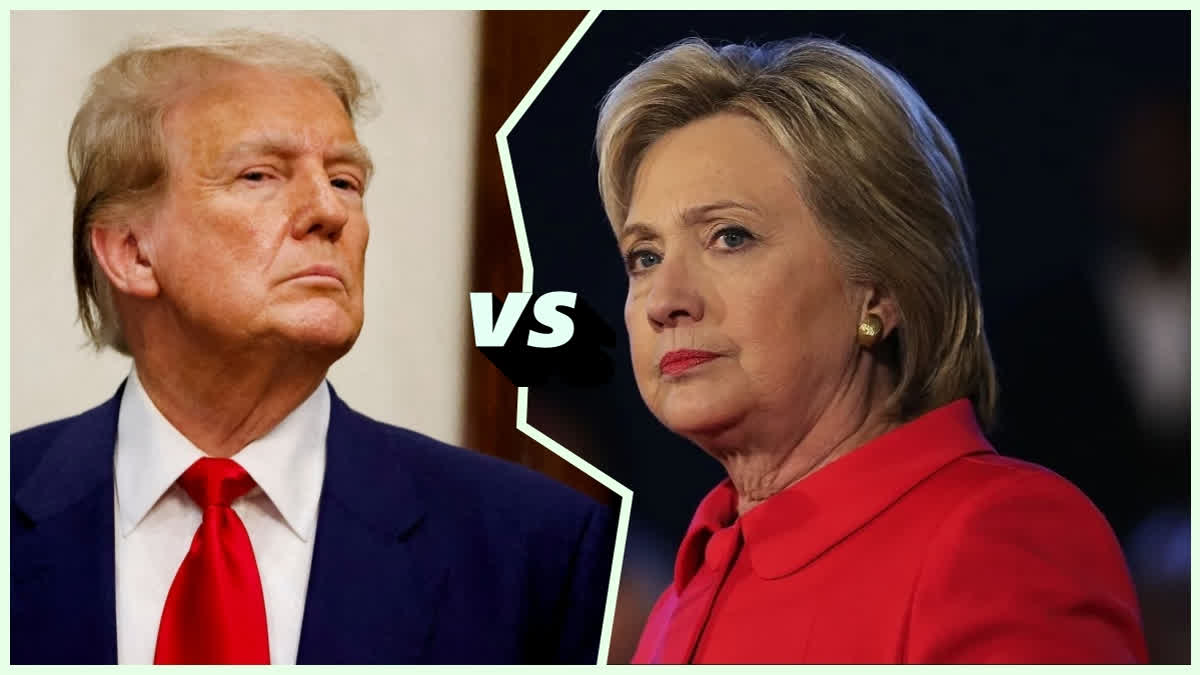US presidential elections have long been marked by suspense, often hinging on slim margins that have captured the attention of the world. From the intense political atmosphere of the 1800s to recent times, America has witnessed elections where a few thousand votes or a single state’s electoral choice changed the course of history.
Andrew Jackson vs. John Quincy Adams
The 1824 election is memorable not only for its closeness but for the way it highlighted regional alliances over party lines. John Quincy Adams ultimately defeated Andrew Jackson by a single vote in the House of Representatives. Without a clear winner from the Electoral College, the decision fell to Congress, where Adams won the majority, despite Jackson having won the popular vote.
James Knox Polk vs. Henry Clay
In 1844, Democrat James Knox Polk narrowly defeated Whig candidate Henry Clay in a highly competitive election. Polk won the electoral vote by a margin of 65 votes but captured the popular vote by only 1.4%. Polk’s win underscored the growing divide in the nation as America expanded westward, setting the stage for future conflicts and new states entering the Union.
Rutherford Hayes vs. Samuel Tilden
The 1876 election between Republican Rutherford Hayes and Democrat Samuel Tilden was one of the most controversial in US history. Hayes won by a single electoral vote, 185 to 184, while losing the popular vote by 3%. After a dispute over 20 contested electoral votes, a special commission awarded them to Hayes, effectively securing his presidency. The Compromise of 1877, resulting from this election, ended Reconstruction in the South and had long-lasting effects on American politics.
James A. Garfield vs. Winfield Scott Hancock
In 1880, James A. Garfield, a Republican, narrowly defeated Democrat Winfield Scott Hancock. Garfield won the electoral college with 214 votes compared to Hancock’s 155 and claimed the popular vote by a margin of only 7,368 votes, a difference of about 1%. This slim margin highlights the regional divides that characterized American politics in the post-Civil War period.
Grover Cleveland vs. James Blaine
The election of 1884 was marked by one of the narrowest victories in US history. Democrat Grover Cleveland won by 37 electoral votes and captured the popular vote by only 7%. The contentious campaign was rife with mudslinging, and Cleveland’s victory was decided by a razor-thin margin in New York. He won the state’s 36 electoral votes by just 1,047 votes out of more than 1.1 million cast.
Benjamin Harrison vs. Grover Cleveland
In a twist, Grover Cleveland found himself on the losing side in 1888, despite winning the popular vote by 8%. Republican Benjamin Harrison triumphed in the electoral college, winning 233 to Cleveland’s 168. This election is one of the few instances in US history where a candidate lost the presidency despite winning more popular votes, echoing a pattern that would reappear in 2000 and 2016.
Woodrow Wilson vs. Charles Hughes
Amid the turmoil of World War I, incumbent Democrat Woodrow Wilson narrowly defeated Republican Charles Hughes by 23 electoral votes, with Wilson securing the popular vote by just 3.1%. The close contest reflected a divided America, with Hughes initially appearing to be in the lead. Wilson’s victory hinged on winning California by a mere 3,800 votes, demonstrating the impact of swing states.
John F. Kennedy vs. Richard Nixon
The 1960 election remains one of the most famously close contests. Democrat John F. Kennedy won against Republican Richard Nixon by a slim margin of 0.2% in the popular vote, amounting to less than 120,000 votes nationwide. Kennedy secured 303 electoral votes to Nixon’s 219, but the race was so tight that the result wasn’t officially declared until the following day. Kennedy’s victory marked a new era of media influence in politics, with television playing a pivotal role.
George W. Bush vs. Al Gore
Perhaps the most contentious election in recent history, the 2000 presidential race between Republican George W. Bush and Democrat Al Gore was decided by just 5 electoral votes. Bush won with 271 votes to Gore’s 266 but lost the popular vote by approximately 500,000, or 0.5%. The election ultimately came down to Florida, where a highly publicised recount led to a Supreme Court decision that awarded the state (and the presidency) to Bush.
George W. Bush vs. John Kerry
In 2004, George W. Bush narrowly won re-election over Democrat John Kerry by 35 electoral votes. Bush claimed 286 votes to Kerry’s 251, with a popular vote margin of 2.4%. The result hinged on Ohio, where Bush’s narrow victory solidified his hold on the presidency, reflecting a polarised American electorate.
Donald J. Trump vs. Hillary Clinton
The 2016 election between Republican Donald Trump and Democrat Hillary Clinton was another example where the popular and electoral votes diverged. Trump secured 304 electoral votes to Clinton’s 227, despite losing the popular vote by nearly 3 million, or about 2.1%. This election underscored the divide in the US between urban and rural voters and sparked debates about the role of the electoral college in modern elections.
From Andrew Jackson’s defeat in 1824 to Donald Trump’s victory in 2016, US presidential elections have shown time and again that every vote counts. As America heads toward future elections, the lessons of these tight races continue to shape the way candidates campaign, citizens vote, and policies are debated.
